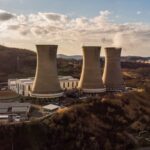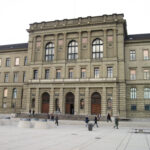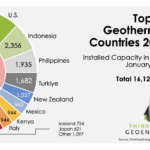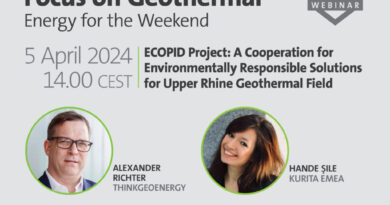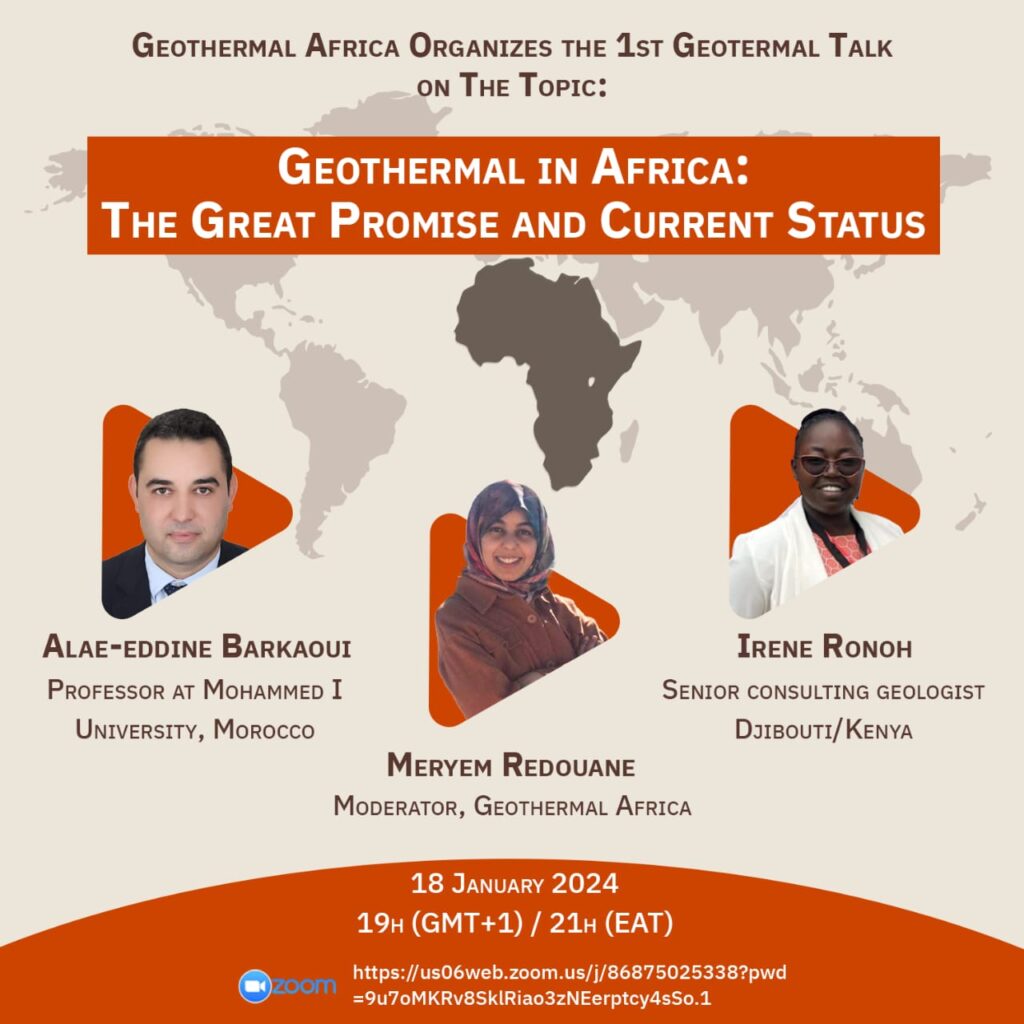The history and great opportunity for geothermal power generation in Campania, Sicily/ Italy
Energy Disrupter
With an extensive heritage in geothermal research and projects, the region of Campania (greater Naples) in Sicily/ Italy has a great opportunity in tapping geothermal energy for power generation, despite the active volcano nature of the resource, so Stefano Carlino in Meteo Web.
In a recent article Stefano Carlino of the Istituto Nazionale di Geofisica e Vulcanologia shares a fantastic historical overview on geothermal in the volcanic district of Campania (the Ischia and Vesuvio volcanoes) near Naples, Sicily, Italy.
In recent weeks the debate has reopened on the problem of geothermal drilling in active volcanic areas and their danger in relation to possible interference with volcanic processes. This occurred due to the emissions of gas and steam from a well built as part of an experimental project located in the Campi Flegrei caldera which involves the use of geothermal heat for small production of electricity.
To get a sufficiently comprehensive picture of this problem, it is necessary first of all to trace the history of geothermal drilling carried out in historical times in the active volcanic district of Campania (Campi Flegrei – Ischia and Vesuvio), remembering that geothermal research was officially born in Italy in the early twentieth century . We will also see how, in more recent times, scientific research in the volcanological field has treasured modern deep drilling techniques, using them as a direct tool for investigating volcanic structures, the physical properties of rocks and measuring the stress accumulated in them.
Already in the early 1800s, Italy was investigating the possibility of using the Earth’s heat for the production of electricity, an idea that will be put into practice after the Industrial Revolution. In 1904, Prince Piero Ginori-Conti managed to transform the thermal energy of the steam into electricity by lighting some bulbs, using an alternative motor from a horse coupled to a dynamo. A few years later, the first geothermal wells were built in the district of Larderello (Pisa, Tuscany), using natural high temperature steam to produce electricity.
With the improvement of drilling techniques, the fields of wells were extended to the entire boraciferous region. Currently the district of Larderello is the only area in Italy where geothermal energy is produced and used in the high enthalpy field, with an electrical power of over 800 MW (Mega Watt).
After the successes obtained in Larderello, the investigations for the search for geothermal sources focused on the volcanic district of the Campi Flegrei, in Campania. In this area, the magmatic reservoirs that had fueled volcanism in the past could have provided sufficient heat to develop relatively shallow (1-3 km) and high temperature geothermal systems. This possibility was investigated between 1939 and 1943, with the first geothermal drilling in the Phlegrean caldera and on the island of Ischia, carried out by the SAFEN company. Research continued in the coming years following the joint venture between the AGIP company and ENEL, in particular in the Campi Flegrei, where in 1977 new drilling campaigns began, which went up to about 3 km deep.
The first drilling in the Campi Flegrei caldera reached depths of several hundred meters, and were carried out to investigate the most superficial thermal field (pilot wells). An example is the drilling carried out in 1940 inside the Monte Nuovo crater . Since this was the last eruptive activity of the Phlegraean Fields , which took place in 1538 , experts believed that the small magmatic basin that had fueled the eruption could still have a sufficient amount of latent heat for the production of high temperature steam. The drilling, which lasted just over five months, performed with a percussion probe, reached a depth of 677 meters, but the maximum temperatures recorded (about + 78 degrees C ) showed significantly lower than expected. The investigations were then temporarily suspended due to the war events starting from September 1943.
In the post-war period, the deepest drilling continued in the sector west of Baia ( Mofete locality ) and in Agnano . Good geothermal potentials were found, in particular in Baia, with the presence of geothermal systems with dominant water with temperatures of about + 200 degrees C , found between 1 and 2 kilometers deep. The maximum temperatures, around + 300 degrees C , were measured in the deepest geothermal aquifers, located at around 2,700 meters. The drainage of the wells showed, however, the presence of fluids with a high degree of salinity, a characteristic that caused technical problems to the plants (fouling and obstruction of the pipes) during their extraction, with a consequent significant decrease in the fluid discharged.
Nevertheless, the high temperatures found at low depths in the Mofete area caused enthusiasm in the sector operators so that in 1977 , with the joint venture AGIP-ENEL, new deep drilling campaigns started again, which were also active during the crisis the bradisismo 1982-84 in Pozzuoli , until the end of 1985 .
With them, two main objectives were set: the first, to confirm the possibility of using high temperature fluids, through a production-reinjection system; the second, to measure the variations of the geothermal system in depth (pressures, groundwater levels and flow rates) generated by the presence of a field of wells. In this case, since these are deeper drilling than in the first campaign, and in consideration of the high population density of the area, more precautions were taken in the excavation operations, with the monitoring of micro seismicity, noise emissions and the diffusion of gases in atmosphere.
The research was extended to the San Vito area , just north of the city of Pozzuoli , and to Licola (just outside the north-western limit of the caldera) to verify the extent of the thermal anomaly observed in Mofete. 7 geothermal wells were drilled between the areas of Mofete and San Vito with depths varying from 800 to about 3,000 meters. Some of these wells were diverted during the excavation (oblique wells), to try to intercept possible fractured or fault areas from which to obtain a greater production. This technique, now widely used, also allowed to contain the extension of the well field, in a very urbanized area.
The characteristics of the wells and of the productive geological formations were ascertained both through short production tests (2-3 days) and with long duration tests (3-4 months). In the first case the fluids were decanted in special tanks and subsequently disposed of, while in the second case it was necessary to resort to a well for the reinjection of the water, also used for the study of the behaviour of the geothermal system. At the end of the investigation it was estimated that the Mofete field could provide a minimum electrical power of 10 MW .
Even the Island of Ischia was the subject of geothermal investigations , in an era in which the use of its thermal waters proliferated, whose health benefits were already well known thanks to the studies of Giulio Iasolino ( De ‘remedies natural which are on the island of Pithecusa, known today as Ischia ) published in 1588 .
The first series of pilot wells (about 80 boreholes) to search for geothermal resources was carried out from 1939 to 1943 , in the western and southern sector of the island, between Cetara (Forio) and the Maronti (Serrara Fontana) and in the northern sector in location Mount Tabor (Casamicciola). From 1951 to 1954 the SAFEN company carried out 6 other perforations, of which only 4 exceeded 100 meters of depth.
The high potential of the Ischia geothermal field stimulated drilling activities; the SAFEN company built some deep wells, which reached one kilometer deep, in the western sector of the island. The perforations made it possible to identify the trend of the deep temperatures, characterizing the geothermal system of Ischia in more detail. Maximum temperatures of + 225 degrees C were reached at 1,151 meters of depth.
The data deriving from the drilling showed that a part of the potential production of geothermal energy in Ischia is linked to dominant steam systems. It should also be remembered that an attempt to use the heat resource in Ischia was started in 1950 , following the installation of a 300 kW binary cycle geothermal power plant in the municipality of Forio , one of the first tested in Europe. After a short production cycle the company was abandoned, it would seem, due to the problems of fouling and corrosion of the wells due to the high salinity of the fluids, a complication that the ancient technologies of the time were unable to overcome.
In later times, within the Project Energy Finalized, it was designed by a geothermal pilot plant 500 kW , which would use fluids at a temperature of about + 150 degrees C . In this case the project never started, probably due to the lack of interest of the local communities, also concerned about the possible negative impact of the geothermal plant on the tourist and thermal activities of the island.
In the final stages of geothermal research in Campania, AGIP requested a new research permit for the Vesuvius area . Also in this case the aim of the research was to verify if, and in which physical conditions, the high enthalpy fluids (with temperatures> + 150 degrees C ), deriving from tanks located in active volcanic areas, could be used for the purposes of energy production and marketing. For this purpose, the well of Trecase , a few kilometers south-east of the Vesuvius crater , was started as part of the AGIP-ENEL joint venture , which began on 19 November 1980 and ended on 13 March 1981., when a depth of 2,072 meters was reached . However, Vesuvius proved to be a ” cold ” volcano since very low temperatures were found, with a gradient slightly lower than + 30 degrees C / km , similar to the average gradient of the Earth.
At the end of the period of geothermal exploration in the district of Campania active volcanoes , the technical problems detected in the extraction of highly saline fluids , the low flow rates of the fluids measured in some wells and the contemporary energy policy choices led to the abandonment of the production plan of electricity from geothermal sources in Campania. The political choices, which were probably decisive in giving up the company, were following the nationalization of ENEL, which occurred in 1963 , and the decrease in oil prices after the crisis Kippur of 1973 .
Some important considerations must be made on the results and technical results obtained from the exploration campaign. First of all, the results of deep core drilling and the measurement of temperature gradients (the variation of temperature with depth) contributed significantly to increasing knowledge of the structure and dynamics of Campania volcanoes. For example, the perforations in Ischia and the carrots of Tufo Verde sampled during the excavations supported the studies of Alfred Rittmann (1930) to define the volcano-tectonic structure of Mount Epomeo (at the time still considered by some experts as a volcano), while the measurement of temperatures both in Ischia and in the Campi Flegrei have been useful in defining the depths at which the rocks begin to behave in a flexible way and hypothesize the depth of the magma basins, also with the help of modern physical modelling software for thermodynamic processes.
The drilling of the well of Trecase , at Vesuvius , revealed for the first time the presence of the carbonate base (the same that forms the surrounding mountainous structure, the Apennines and the Sorrento Peninsula ) under the volcanic district of Campania, at a depth of about 2 kilometers, and it was also indispensable for dating the beginning of the volcanic activity of Vesuvius .
Probably, the results of geothermal explorations in Campania have been more profitable for volcanological research than for industrial applications, but have also shown that there is the possibility of using geothermal energy sources, taking advantage of today’s more advanced technologies than last century, such as those of the binary cycle and total fluid reinjection systems.
However, the experiences and data acquired during the geothermal explorations of the Campania volcanoes do not provide an exhaustive framework for assessing the interferences that the entrapment and reinjection of high enthalpy fluids would have determined / could determine on the deeper geothermal system. It should however be underlined that the drilling campaign carried out in particular in the Phlegraean Fields , and continued also during the bradyseism phase of 1982-84 , did not raise particular concerns, neither among the experts and not even in the resident population.
The problem of volcanic hazard induced by the operation of geothermal plants is, today, typically assessed in a preliminary phase, with a detailed study of the area of ??interest and with the help of geophysical and geochemical investigations. The computer numerical models simulate, then, the thermodynamic variations of the geothermal system that would arise following the extraction and reinjection of the fluids. However, especially in the absence of a sufficiently detailed geological knowledge framework, field experience will continue to play a key role in assessing the risks and sustainability of geothermal plants, and only the well drilling and testing phase can really define in how the geothermal system will respond to the operation of a geothermal plant.
The experience of the last 30 years in this field has shown that geothermal energy can be applied, with acceptable risks, even in active volcanoes , as proven by the countless projects carried out by countries such as Iceland , leader in experimentation and use. of high and medium enthalpy geothermal plants (see for example: https://geothermal.org/PDFs/Articles/09JulyAugust31.pdf ). Furthermore, applications in the field of medium and low enthalpy with the use of technologies that do not provide for the extraction of the fluid for the small production of electricity, minimize the perturbations induced on the geothermal system.
Finally, it should be remembered that the advancement of drilling techniques, and the direct data provided by them, have prompted volcanologists and seismologists to use this survey methodology to increase scientific knowledge in their respective fields (for info and insights: https: / /www.icdp-online.org/home /). Precisely in the caldera of the Campi Flegrei , at the end of 2012 the scientific drilling phase of a pilot well ( Campi Flegrei Deep Drilling Project ), 500 meters deep , which provided some new elements on which to reflect on the mechanisms of the eruptions that ended they generated the caldera itself. Deep scientific perforations have been carried out in various volcanoes (in Hawaii , Japan and Iceland ) and have contributed to better define their structure and dynamics.
In conclusion, the history of geothermal research in the Phlegraean Fields has shown us that the elements at the expense of the use of heat (to produce electricity) in this active caldera derive mostly from technological problems (such as the reduction of salinity highly corrosive fluids and the reinjection of incondensable gases) rather than the real danger of triggering a chain reaction that even generates an eruption. With all the necessary precautions, geothermal energy in Campania could become a sector for reviving the economy , but it can also be a driving force for scientific research applied to active volcanoes. If science and industry work judiciously in this direction, it will be possible to obtain good results and reduce the risks associated with this activity.
For the original article in Italian including the figures click here.
Further reading
- Carlino, S. (2018). Neapolitan Volcanoes: A Trip Around Vesuvius, Campi Flegrei and Ischia. Springer.
- Carlino, S., Somma, R., Troise, C., & De Natale, G. (2012). The geothermal exploration of Campanian volcanoes: Historical review and future development. Renewable and Sustainable Energy Reviews , 16 (1), 1004-1030.
- Manzella A., Ungarelli C. (2001). Geothermal energy. Energy under our feet. Il Mulino Ed.
- Sommaruga, C. (2010). Italian Primates in the Exploitation of Medium and Low Temperature Geothermal Resources. detail: Heat Pumps, Binary Cycles, Flash Steam Plants (1930-1960). Document available in: http://www.pionierieni.it/wp/wp-content/uploads/La-Geotermia-in-Italia-dal-1940-ad-oggi.-Di-Cludio-Sommaruga..pdf .
Source: Meteo Web




